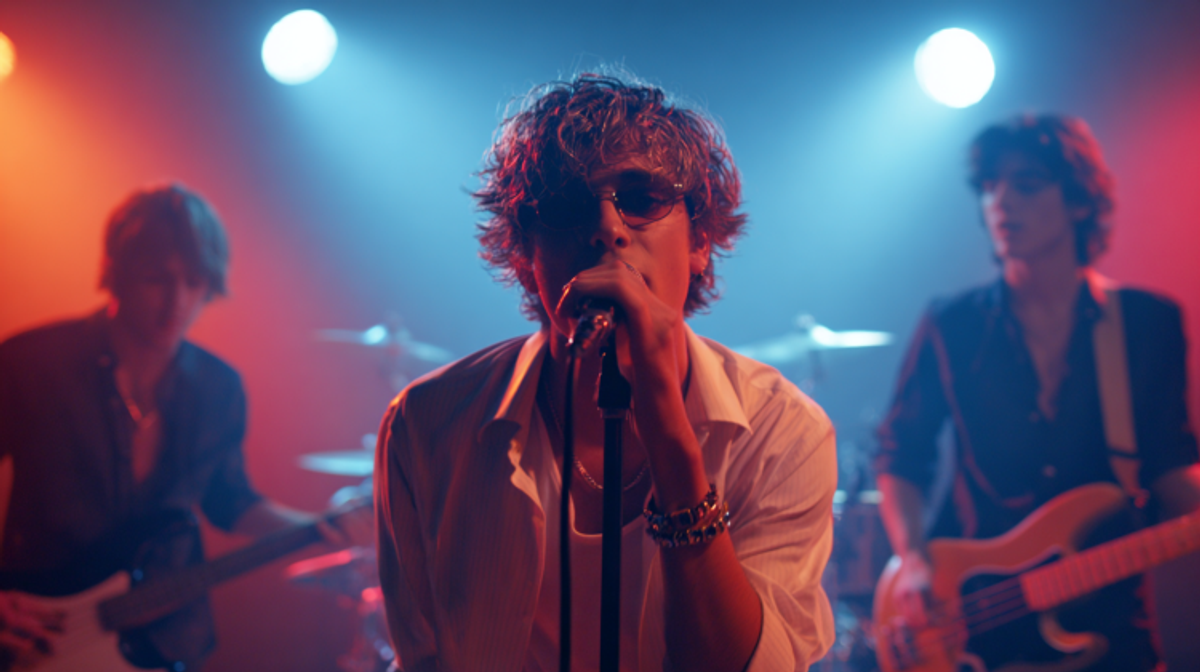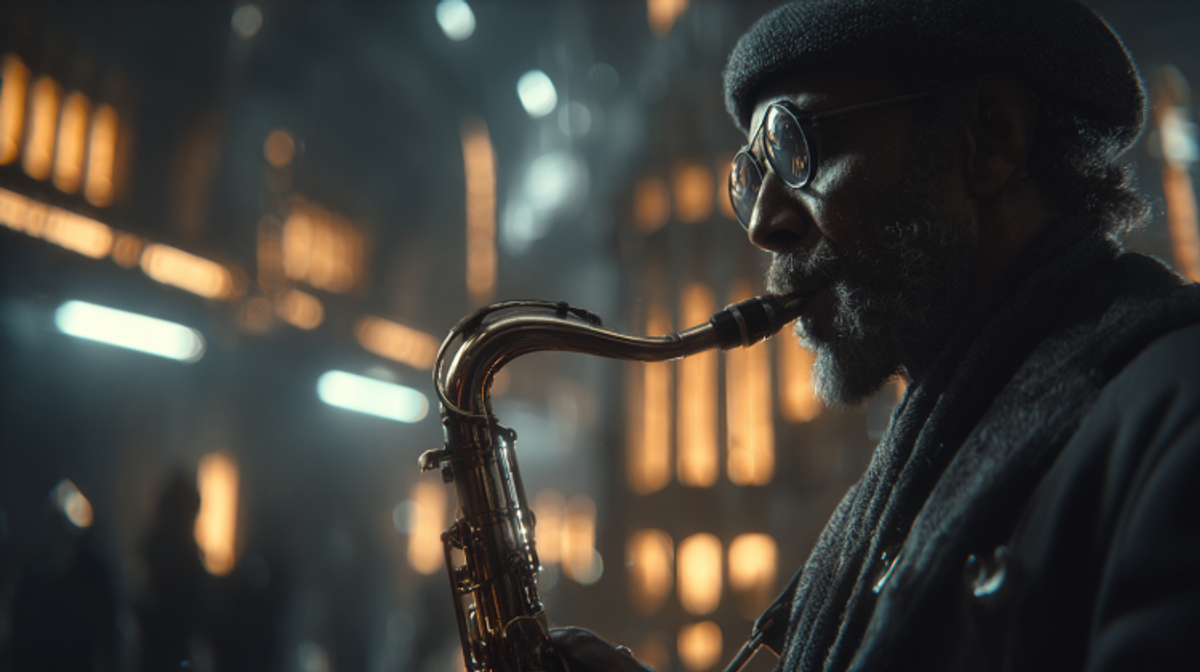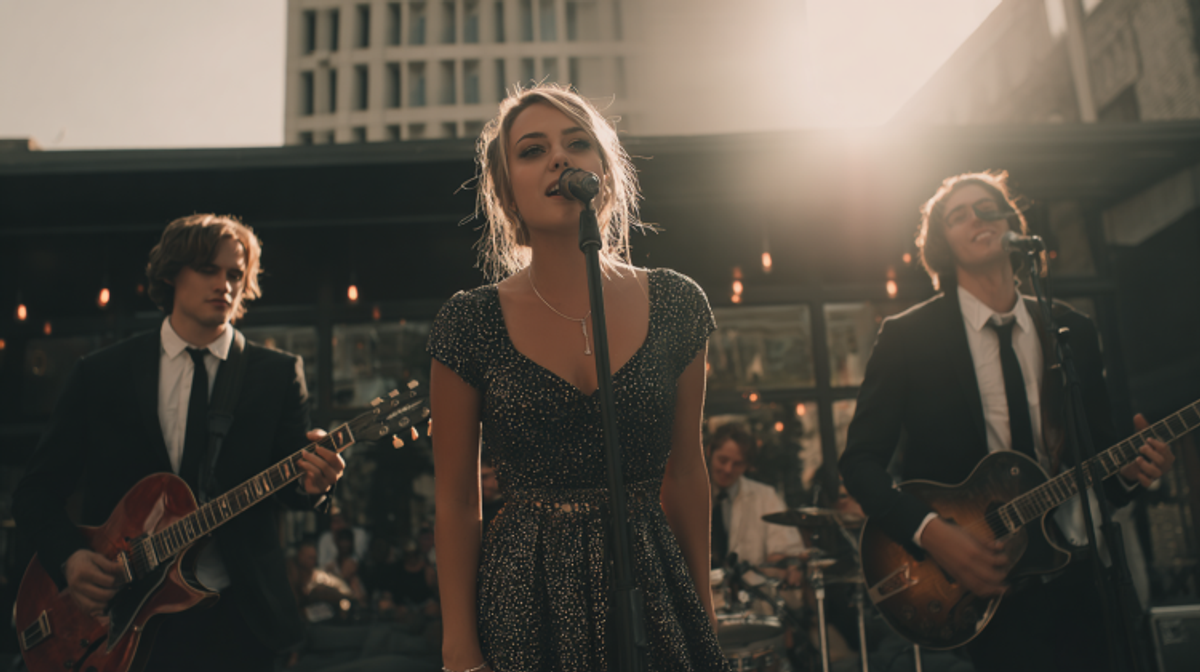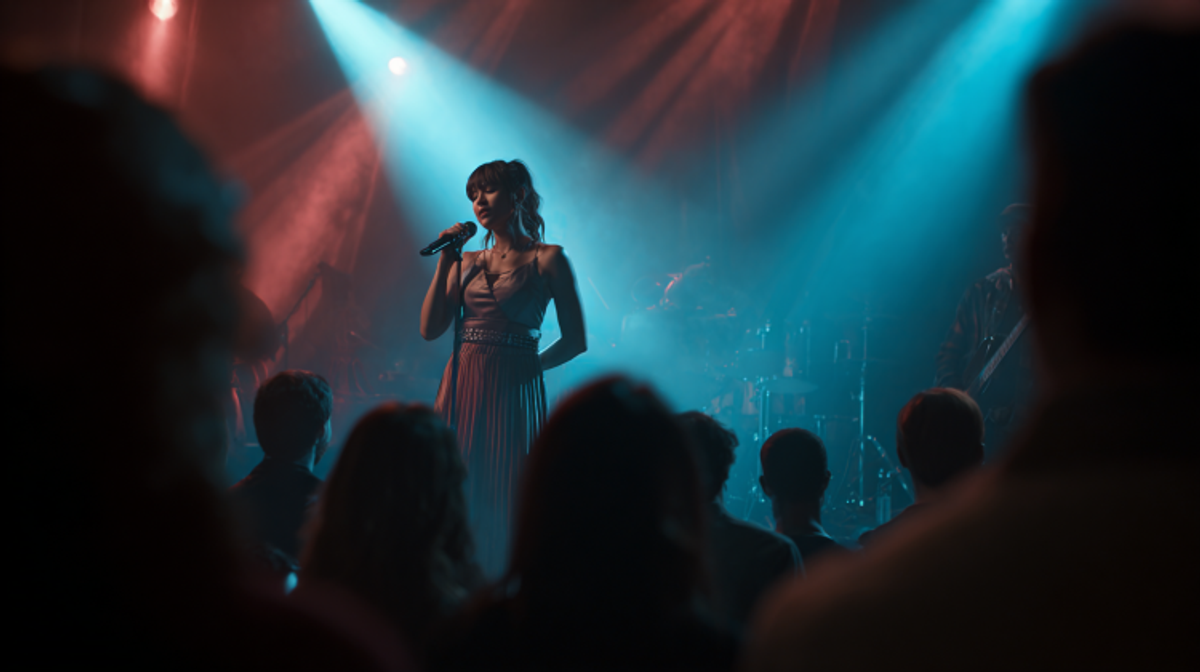Protecting Brand and Voice in Music Through the Right of Publicity

Musicians face an unprecedented threat to their artistic identity. From AI voice cloning music technologies that can replicate any artist's vocal signature to sophisticated music deepfakes circulating on social media platforms, the lines between authentic and artificial have never been blurred more dramatically. Taylor Swift's likeness appeared in unauthorized deepfake content that garnered millions of views before removal, while deceased artists like Elvis Presley continue generating revenue through carefully managed posthumous appearances, highlighting both the vulnerabilities and opportunities within modern celebrity identity protection.
The right of publicity has emerged as the primary legal shield protecting musicians' most valuable asset: their unique identity. This intellectual property doctrine grants artists control over how their name, image, voice, and other distinctive characteristics are used commercially. Unlike copyright, which protects creative works, or trademark, which covers brand identifiers, the right of publicity specifically safeguards the commercial value of being recognizable as yourself.
For music industry professionals, understanding these protections becomes increasingly critical as technology advances. Voice cloning ethics debates intensify while artist compensation AI systems struggle to fairly distribute payments for synthesized performances. The passage of the ELVIS Act in Tennessee demonstrates how lawmakers are adapting to protect performers from unauthorized digital replication, yet significant gaps remain in federal protection.
Understanding the Right of Publicity

The right of publicity operates as a distinct form of intellectual property protection, fundamentally different from other legal doctrines musicians encounter. This right empowers individuals to control and monetize the commercial exploitation of their identity, encompassing names, likenesses, voices, and other recognizable personal attributes.
Legal Foundation and Scope
Unlike copyright or patent law, no federal statute governs the right of publicity across the United States. Instead, this protection emerges from a patchwork of state laws, creating a complex legal environment where an artist's protections vary dramatically based on geography. More than half of the states provide either statutory or common law recognition of publicity rights, though each jurisdiction defines these protections differently.
California's Celebrity Rights Act offers comprehensive protection extending 70 years beyond death, while New York focuses primarily on living individuals under its Civil Rights Law. Tennessee's recent ELVIS Act specifically addresses AI voice cloning music concerns, prohibiting unauthorized voice replication technologies that could harm artist compensation AI systems. These variations create strategic considerations for musicians who must navigate different legal standards depending on where potential violations occur.
The legal foundation treats publicity rights as property rather than privacy interests. This distinction proves crucial because property rights can be licensed, sold, and inherited, making them valuable business assets. Courts consistently recognize that celebrities invest time, effort, and resources in developing their public personas, creating economic value that deserves legal protection from unauthorized exploitation.
Key Elements Required for Protection
Establishing a right of publicity violation requires proving several specific elements, though requirements vary by jurisdiction. Generally, plaintiffs must demonstrate that defendants used an identifiable aspect of their persona for commercial purposes without authorization, and that this use was exploitative or suggested endorsement.
Identifiability represents the cornerstone requirement. The disputed use must clearly evoke the specific individual claiming protection. For musicians, this might involve distinctive vocal characteristics in AI voice cloning music applications, recognizable stage personas, or unique performance styles. Courts examine whether ordinary consumers would associate the unauthorized use with the particular artist.
Commercial purpose requirements distinguish actionable violations from protected speech. Editorial coverage, news reporting, and artistic commentary typically receive First Amendment protection, while advertising, merchandising, and promotional uses face scrutiny. Music deepfakes used in commercial advertising clearly cross this threshold, while parody or criticism may not.
The exploitation element addresses whether the use trades on the celebrity's fame for commercial advantage. This doesn't require proving actual economic harm in many jurisdictions, particularly those offering statutory damages. Some states presume commercial value exists when protected elements appear in commercial contexts, shifting the burden to defendants to prove legitimate use.
Voice cloning ethics discussions have prompted courts to expand traditional likeness concepts. Recent decisions recognize that vocal characteristics can be as distinctive as physical appearance, particularly for recording artists whose voices represent their primary commercial asset. This evolution directly impacts how AI training data copyright infringement cases are analyzed, as voice samples used without permission may violate both copyright and publicity rights simultaneously.
How Right of Publicity Applies to Musicians

Musicians possess unique advantages in asserting publicity rights because their professional identity encompasses multiple protectable elements. Recording artists develop distinctive personas that extend beyond mere musical talent, creating valuable commercial properties deserving legal protection.
Protected Elements for Music Artists
Musical artists can protect various aspects of their public identity under publicity rights doctrine. Stage names receive protection even when different from legal names, recognizing that performers often build their careers around carefully crafted artistic identities. Prince's unpronounceable symbol, Lady Gaga's distinctive moniker, and countless other stage names represent valuable intellectual property requiring legal safeguards.
Vocal characteristics increasingly receive recognition as protectable elements, particularly relevant given advancing AI voice cloning music technologies. Courts have recognized that distinctive singing voices can be as identifiable as physical appearance. Bette Midler's successful lawsuit against Ford Motor Company for using a sound-alike singer established precedent that voice characteristics merit protection when commercially distinctive.
Physical likeness protection extends beyond basic photography to encompass signature looks, gestures, and performance styles. Madonna's cone bra, Kiss's distinctive makeup, or Michael Jackson's moonwalk represent protectable persona elements. These visual signatures often appear in merchandising without authorization, creating enforcement opportunities.
Signatures, autographs, and handwriting styles receive protection when used commercially. Unauthorized reproduction of artist signatures on memorabilia or promotional materials can violate publicity rights, particularly when suggesting authentic endorsement or approval.
Catchphrases and verbal signatures associated with specific artists may qualify for protection. Elvis Presley's estate successfully protects phrases like "Thank you, thank you very much," demonstrating how distinctive verbal expressions can become valuable intellectual property assets.
Common Violations in the Music Industry
Unauthorized merchandising represents the most frequent publicity rights violation affecting musicians. T-shirts, posters, coffee mugs, and countless other products bearing artist names or likenesses generate substantial revenue streams that rightfully belong to the performers or their estates. Online marketplaces have complicated enforcement by enabling rapid proliferation of infringing merchandise from anonymous sellers.
Music deepfakes and AI voice cloning music applications pose emerging threats to artist identity protection. These technologies can create convincing replications of any performer's voice, potentially generating unauthorized recordings, advertisements, or endorsements. The sophistication of these systems raises complex questions about how should artists be compensated for their voice when AI systems can replicate their distinctive characteristics.
False endorsement scenarios occur when businesses use artist names, images, or music to suggest approval or sponsorship without authorization. Restaurants playing specific songs while displaying artist imagery, retail stores using performer likenesses in advertising, or brands associating themselves with musicians through unofficial social media campaigns can violate publicity rights.
Sampling and remix culture creates gray areas where artistic expression intersects with commercial exploitation. While some uses may qualify as fair use or parody, others cross into commercial appropriation territory. Digital platforms hosting user-generated content struggle to distinguish between protected artistic commentary and actionable violations.
Deepfake pornography and defamatory content targeting musicians represents particularly harmful violations. These materials can damage reputations while generating revenue for unauthorized creators, making swift legal action essential for protecting both commercial interests and personal dignity.
Music promotion activities sometimes inadvertently violate publicity rights when promoters or venues use artist names or images without proper authorization. Concert listings, festival advertisements, and promotional materials must carefully navigate the line between factual reporting and commercial exploitation of celebrity identity.
State vs Federal Law Variations

The absence of federal right of publicity legislation creates a complex legal environment where protection depends entirely on state law. This jurisdictional complexity requires musicians and industry professionals to understand varying standards, remedies, and enforcement mechanisms across different territories.
States with Strong Right of Publicity Laws
California leads publicity rights protection through its Celebrity Rights Act, offering comprehensive coverage for both living and deceased individuals. The statute protects names, voices, signatures, photographs, and likenesses for 70 years after death, creating substantial posthumous value for artist estates. California's law includes specific provisions addressing digital manipulation and deepfake technologies, making it particularly relevant for addressing AI voice cloning music concerns.
New York provides robust protection through its Civil Rights Law, though primarily focusing on living individuals. The state requires commercial use without consent and offers both injunctive relief and monetary damages. New York courts have developed sophisticated precedents addressing voice cloning ethics and digital impersonation, making the jurisdiction attractive for high-profile cases.
Tennessee recently enhanced its protection through the ELVIS Act, specifically targeting unauthorized voice replication technologies. This legislation directly addresses how AI training data copyright infringement intersects with publicity rights, prohibiting the use of voice cloning technology to create recordings without artist consent. The law includes enhanced penalties and streamlined enforcement mechanisms.
Indiana offers particularly strong posthumous protection, extending rights up to 100 years after death. This extended duration creates substantial long-term value for artist estates and encourages careful estate planning. Indiana's statute includes broad definitions of protected elements and favorable damage provisions.
Florida provides comprehensive statutory protection with specific provisions addressing digital technologies and online platforms. The state's law includes anti-SLAPP protections to prevent frivolous litigation while maintaining robust remedies for legitimate violations.
Texas recently strengthened its publicity rights statute, responding to increasing concerns about deepfake technologies and unauthorized AI-generated content. The updated law includes specific provisions addressing voice synthesis and digital manipulation technologies.
Federal Trademark and Copyright Intersections
While no federal right of publicity exists, related federal laws provide overlapping protection for musician identity elements. The Lanham Act addresses false endorsement and trademark infringement when artist names or likenesses are used in ways suggesting commercial association or sponsorship.
Trademark protection can cover artist names, logos, and distinctive visual elements when used in commerce. Unlike publicity rights, trademark protection requires actual commercial use and can theoretically continue indefinitely with proper maintenance. Many successful musicians register their stage names and associated imagery as trademarks to supplement publicity rights protection.
Copyright law protects specific creative works but not persona elements themselves. But, intersection issues arise when unauthorized uses combine protected copyrighted material with publicity rights violations. Music deepfakes might simultaneously infringe copyright in underlying musical compositions while violating publicity rights in vocal characteristics.
The Digital Millennium Copyright Act provides takedown procedures for copyrighted content but doesn't address publicity rights violations directly. This limitation creates enforcement challenges when unauthorized content combines both copyright and publicity rights infringement.
Section 43(a) of the Lanham Act offers federal remedies for false endorsement scenarios, providing an alternative avenue for addressing some publicity rights violations in interstate commerce. This provision has proven particularly useful for addressing online violations that cross state boundaries.
The intersection of federal and state law creates strategic considerations for enforcement actions. Musicians may simultaneously pursue federal trademark or false advertising claims alongside state publicity rights violations, potentially accessing different remedies and procedural advantages.
Jurisdictional complexity increases when violations occur across multiple states or involve online platforms with nationwide reach. Musicians must consider where to file suit based on varying state law protections, federal court access, and practical enforcement considerations.
Commercial Use and Licensing Strategies

Musicians can transform publicity rights from defensive legal tools into proactive revenue generators through strategic licensing and commercial partnerships. Understanding licensing opportunities and digital platform challenges enables artists to maximize the commercial value of their identity while maintaining appropriate control.
Merchandising and Endorsement Rights
Merchandising represents the most traditional and lucrative application of publicity rights for musicians. Artist-branded clothing, accessories, collectibles, and lifestyle products generate billions in annual revenue across the music industry. Successful merchandising strategies require careful balance between broad market appeal and maintaining artistic integrity.
Licensing agreements for merchandising typically address scope of use, quality control standards, territory restrictions, and revenue sharing arrangements. Artists must decide whether to grant exclusive or non-exclusive rights, with exclusive deals often commanding higher guaranteed minimums but limiting flexibility for additional partnerships.
Endorsement deals leverage artist credibility and fan loyalty to promote third-party products or services. These agreements require particular attention to voice cloning ethics considerations, as brands increasingly seek rights to use artist likenesses across digital platforms and emerging technologies. Musicians should specifically address AI voice cloning music applications in endorsement contracts to prevent unauthorized synthetic reproductions.
Quality control provisions in licensing agreements protect artist reputation while ensuring commercial partners meet acceptable standards. These clauses become particularly important when dealing with international licensees or emerging technology applications where quality variations can damage artist brands.
Revenue models for merchandising and endorsements vary significantly based on artist leverage, product categories, and market territories. Established artists often command substantial guaranteed minimums plus percentage royalties, while emerging artists might accept lower guarantees in exchange for higher percentage rates or broader exposure opportunities.
Digital merchandising has expanded traditional licensing considerations to include virtual goods, NFTs, and metaverse applications. These emerging categories require new contractual frameworks addressing ownership, transferability, and platform-specific usage rights.
Digital Platform Considerations
Social media platforms and streaming services present complex challenges for managing publicity rights in digital environments. These platforms enable rapid content creation and distribution while making unauthorized use detection and enforcement increasingly difficult.
Platform terms of service often include broad licensing language that could potentially conflict with artist publicity rights. Musicians should carefully review platform agreements and consider whether participation grants platforms excessive rights to use their identity for promotional purposes.
User-generated content policies on platforms like TikTok, Instagram, and YouTube create gray areas where fan creativity intersects with commercial exploitation. While fans creating tribute videos or covers generally don't violate publicity rights, commercial accounts using artist likenesses for promotional purposes may cross legal boundaries.
AI voice cloning music applications integrated into social platforms raise particular concerns about unauthorized use and artist compensation AI systems. These tools enable users to create synthetic recordings using any voice, potentially generating commercial content without artist consent or compensation.
Content moderation systems on major platforms increasingly recognize publicity rights violations, though enforcement remains inconsistent. Musicians should establish relationships with platform representatives and use available reporting mechanisms while maintaining independent legal enforcement capabilities.
Influencer marketing partnerships require clear contractual terms addressing publicity rights usage. When musicians collaborate with social media influencers, agreements should specify how each party's identity can be used and whether additional compensation applies for expanded usage rights.
Blockchain and NFT technologies offer new opportunities for licensing digital identity rights while maintaining provenance and authenticity verification. These systems could provide solutions for tracking usage and distributing compensation when AI systems use artist voice characteristics.
Music promotion strategies in digital environments must balance visibility goals with identity protection concerns. Artists seeking viral marketing success should establish clear guidelines for fan engagement while protecting against commercial exploitation by unauthorized third parties.
Estate Planning and Posthumous Rights

Death doesn't diminish a musician's commercial value or legal protection needs. Posthumous publicity rights often become more valuable than lifetime earnings, requiring sophisticated estate planning to maximize benefits for heirs while ensuring proper management of artistic legacies.
Duration of Protection After Death
Posthumus publicity rights duration varies dramatically across states, creating significant estate planning implications for musicians. California provides 70 years of protection after death, while Indiana extends coverage for 100 years. Some states offer no posthumous protection at all, making domicile selection a crucial estate planning consideration.
The economic impact of extended posthumous protection can be substantial. Elvis Presley's estate continues generating tens of millions annually decades after his death, with careful management of his publicity rights contributing significantly to this ongoing revenue. Michael Jackson's estate has earned over $2 billion since his death through strategic licensing and partnerships.
Duration calculations typically begin from the date of death, not the date of initial commercial success. This means artists who achieve fame later in life may provide shorter posthumous protection periods for their heirs, while those achieving early success offer longer potential revenue streams.
Some states require registration or other formalities to maintain posthumous rights, while others provide automatic protection. Estate planners must understand these requirements and ensure compliance to avoid inadvertent forfeiture of valuable rights.
The interaction between posthumous publicity rights and federal copyright duration can create complex management scenarios. While copyright in musical compositions and recordings follows federal law, publicity rights in the artist's persona remain governed by state statutes with different duration periods.
Managing Legacy Artist Rights
Successful posthumous rights management requires professional estate administration with specialized expertise in entertainment law and celebrity identity protection. Estate executors must balance preservation of artistic integrity with commercial revenue generation, often making decisions the artist never explicitly addressed.
Authenticity becomes paramount in posthumous licensing decisions. Fans and industry partners expect estate-approved uses to reflect the artist's values and artistic vision. Poor licensing decisions can damage legacy value while appropriate partnerships can enhance long-term brand strength.
Technology presents both opportunities and challenges for legacy management. AI voice cloning music capabilities enable creation of new content featuring deceased artists, but raise complex ethical and legal questions about consent and authenticity. Some estates embrace these technologies for specific applications while others prohibit any synthetic reproduction.
Museum partnerships and permanent installations offer ways to preserve artistic legacies while generating ongoing revenue. Graceland's success with Elvis Presley demonstrates how physical locations can become enduring commercial enterprises built around publicity rights management.
Digital platform management requires ongoing attention as new services and technologies emerge. Legacy artists need representation on streaming platforms, social media, and emerging digital marketplaces to prevent unauthorized use while maximizing legitimate revenue opportunities.
Biographical and documentary projects require careful evaluation to ensure appropriate compensation and artistic representation. These projects can significantly impact public perception and commercial value, making contract terms and creative control provisions essential considerations.
Merchandising strategies for deceased artists often focus on nostalgia and tribute products while avoiding tasteless commercialization. Successful programs maintain connection to the artist's era while appealing to new generations of fans through carefully curated product offerings.
Estate planning documents should specifically address publicity rights management, including guidance for licensing decisions, quality control standards, and prohibited uses. Without clear direction, heirs may disagree about appropriate commercial partnerships, potentially leading to costly litigation and missed opportunities.
Record Label Perspectives and Contracts
Record labels maintain complex relationships with artist publicity rights, often seeking broad licensing terms while artists increasingly demand greater control over their commercial identity. Understanding these dynamics helps musicians negotiate better agreements and avoid problematic contractual provisions.
Negotiating Publicity Rights in Recording Agreements
Traditional recording contracts often include sweeping publicity rights grants that extend far beyond music promotion. Labels typically argue these broad rights are necessary for effective marketing and promotion, while artists should limit grants to specific, music-related purposes with appropriate compensation.
Scope limitations prove essential in modern publicity rights negotiations. Artists should resist blanket grants covering "all publicity and promotional purposes" in favor of specific enumerated uses. Acceptable uses might include album promotion, concert marketing, and music-related merchandise, while excluding endorsements, non-music commercial partnerships, and AI voice cloning music applications.
Term restrictions ensure publicity rights grants don't extend indefinitely beyond the recording agreement's duration. Many standard contracts grant perpetual rights or tie publicity rights to copyright durations, potentially creating decades of unauthorized use after artist-label relationships end. Artists should negotiate specific termination dates aligned with recording agreement terms.
Territorial limitations become increasingly important as streaming and digital distribution enable worldwide content access. Artists might grant broader publicity rights in primary markets while retaining greater control in international territories where they maintain separate representation.
Approval rights allow artists to maintain quality control over how their identity is used in promotional contexts. While labels resist approval requirements that could delay time-sensitive marketing campaigns, artists should negotiate approval rights for significant promotional uses, particularly those involving third-party partnerships or non-traditional marketing approaches.
Compensation structures for publicity rights usage vary significantly across different agreement types. Established artists often negotiate separate payments for publicity rights usage beyond basic recording promotion, while newer artists might accept broader grants in exchange for enhanced promotional commitments from labels.
Digital platform provisions require specific attention given the rapid evolution of online marketing techniques. Contracts should address social media usage, streaming platform promotion, and emerging technologies like virtual reality or metaverse applications.
Label Responsibilities and Liability
Record labels assume significant liability when using artist publicity rights, making proper contractual documentation essential for risk management. Labels must ensure their usage remains within granted rights and complies with applicable state law requirements.
Third-party licensing represents a particular liability area when labels sublicense artist publicity rights to promotional partners, merchandise companies, or digital platforms. Labels should maintain indemnification provisions and ensure sublicensees comply with original contract limitations.
Music promotion activities can inadvertently violate publicity rights when labels use artist identity beyond granted permissions. Promotional campaigns involving non-music products, lifestyle branding, or celebrity endorsements may exceed typical recording agreement grants.
International usage creates complex liability scenarios when labels promote artists in territories with different publicity rights laws. European privacy rights, Canadian personality rights, and other international protections may impose additional obligations beyond US state law requirements.
AI training data copyright infringement concerns intersect with publicity rights when labels use artist recordings or likenesses to train artificial intelligence systems. These applications may require specific contractual authority beyond traditional promotional rights grants.
Emerging technology applications like deepfakes, virtual performances, and synthetic media require careful legal analysis to determine whether existing contract terms provide adequate authorization. Labels should update standard contract language to address these evolving technologies.
Enforcement obligations vary based on contract terms and state law requirements. Some agreements require labels to actively protect artist publicity rights, while others merely grant usage rights without imposing enforcement duties. Clear contractual language prevents disputes about respective responsibilities.
Indemnification provisions should address scenarios where labels face third-party claims related to publicity rights usage. Mutual indemnification structures often prove more equitable than one-sided provisions, with each party responsible for their respective actions and authorizations.
Enforcement and Legal Remedies
Effective publicity rights enforcement requires understanding available legal remedies, strategic case development, and practical considerations for stopping unauthorized usage while securing appropriate compensation.
Filing Claims and Damages
Publicity rights enforcement begins with identifying the appropriate jurisdiction and applicable state law. Musicians must consider where violations occurred, defendant locations, and which state's laws provide the most favorable remedies. Forum selection can significantly impact case outcomes and available damages.
Evidentiary development requires documenting the unauthorized use, proving commercial purpose, and establishing the economic value of the violated rights. Screenshots, archived web pages, sales data, and expert testimony about commercial impact often prove essential for successful cases.
Statutory damages provisions vary significantly across states, with some jurisdictions offering minimum awards regardless of proven economic harm. California provides statutory damages up to $150,000 per violation, while other states require proof of actual damages or defendant's profits.
Actual damages calculations require establishing the licensing value of the unauthorized use. This might involve comparable licensing deals, expert testimony about market rates, or evidence of lost licensing opportunities resulting from the unauthorized use.
Profit disgorgement allows plaintiffs to recover defendants' gains from unauthorized usage, often proving more valuable than actual damages when violations generate substantial revenue. This remedy requires detailed financial discovery to establish defendant profits attributable to the publicity rights violation.
Injunctive relief often provides the most immediate and valuable remedy for ongoing violations. Courts readily grant preliminary injunctions when plaintiffs demonstrate likelihood of success and irreparable harm, effectively stopping unauthorized usage while litigation proceeds.
Attorney's fees recovery depends on state law provisions and contract terms. Some states provide fee-shifting for prevailing plaintiffs, while others require specific contractual provisions or exceptional circumstances.
Punitive damages may be available when defendants engage in willful or egregious violations. These awards can substantially increase total recovery while deterring future violations by the same or similar defendants.
Alternative Dispute Resolution
Arbitration provisions in recording contracts, licensing agreements, or other industry contracts often require dispute resolution outside traditional court systems. These private proceedings can offer faster resolution and specialized expertise but may limit available remedies or appeal rights.
Mediation provides opportunities for creative settlement solutions that might not be available through litigation. Parties can negotiate ongoing licensing arrangements, public apologies, charitable donations, or other remedies tailored to specific circumstances.
Industry-specific arbitration panels, such as those administered by entertainment industry organizations, offer specialized expertise in music industry disputes. These forums understand industry customs and practices that generalist arbitrators might miss.
Cost considerations often favor alternative dispute resolution for smaller violations where litigation expenses might exceed potential recoveries. Mediation and arbitration typically cost less than federal court litigation while still providing binding resolution.
Confidentiality provisions in alternative dispute resolution can protect sensitive business information and prevent negative publicity for both parties. This consideration proves particularly important for musicians concerned about public relations impact.
Enforceability of arbitration awards varies by jurisdiction, though most states recognize binding arbitration under uniform arbitration acts. International enforcement may prove more complex when dealing with foreign defendants or offshore platforms.
Speed advantages of alternative dispute resolution can prove crucial when dealing with time-sensitive violations like unauthorized concert merchandising or viral social media content. Expedited arbitration procedures can resolve disputes in weeks rather than years.
Appeal rights in arbitration are typically limited compared to court judgments, making initial case development and presentation particularly important. Parties should ensure adequate discovery and expert testimony during the arbitration process rather than relying on appellate correction of errors.

Looking Forward
The convergence of advancing technology and evolving legal frameworks creates both opportunities and challenges for musicians seeking to protect and monetize their identity rights. AI voice cloning music technologies will continue pushing legal boundaries while new compensation models emerge to fairly reward artists for synthetic reproductions of their distinctive characteristics.
Legislative developments across multiple states suggest growing recognition of publicity rights importance in digital environments. The ELVIS Act represents just the beginning of targeted legislation addressing AI training data copyright infringement and voice cloning ethics concerns. Musicians should anticipate expanded protections while actively participating in policy discussions shaping future legal frameworks.
International harmonization efforts may eventually provide more consistent publicity rights protection across jurisdictions. Current variations in state law create compliance challenges and enforcement gaps that disadvantage artists operating in global markets. Federal legislation remains possible, though industry stakeholders continue debating appropriate scope and duration provisions.
Technology solutions for tracking usage and distributing compensation show promise for addressing how should artists be compensated for their voice in AI-generated content. Blockchain-based systems and automated licensing platforms could provide real-time monitoring and payment distribution while maintaining artist control over identity usage.
The music industry must balance innovation opportunities with artist protection imperatives. Music deepfakes and synthetic performances offer creative possibilities while raising fundamental questions about authenticity and consent. Successful resolution requires collaboration between technologists, legal professionals, and artists themselves.
Education and awareness initiatives help artists understand their rights and available protections. As publicity rights law continues evolving, musicians need access to current information about state law variations, enforcement strategies, and licensing opportunities. Industry organizations play crucial roles in providing these educational resources.
Emerging business models in the creator economy present new opportunities for musicians to monetize their identity rights beyond traditional entertainment industry structures. Direct fan engagement platforms, NFT marketplaces, and subscription-based content services offer alternative revenue streams while maintaining greater artist control.
The right of publicity will continue adapting to technological advancement and changing commercial realities. Musicians who understand these legal protections and actively manage their identity rights position themselves to thrive in an increasingly complex entertainment environment where personal brand value often exceeds traditional music revenue streams.
References
- McCarthy, J. Thomas. "The Rights of Publicity and Privacy" 2nd Edition. West Academic Publishing, 2024.
- Tennessee General Assembly. "ELVIS Act - Ensuring Likeness Voice and Image Security Act." Public Chapter No. 632, 2024.
- California Legislature. "Celebrity Rights Act Updates for Digital Media." Assembly Bill 1836, 2024.
- Rothman, Jennifer E. "The Right of Publicity: Privacy Reimagined for a Public World." Harvard University Press, 2024.
- Recording Industry Association of America. "AI and Music: Industry Guidelines for Voice Synthesis Technologies." RIAA Policy Paper, 2025.
- Entertainment Law Reporter. "State-by-State Analysis of Publicity Rights Protection." Volume 46, Issue 3, 2024.
- American Bar Association Section of Intellectual Property Law. "Publicity Rights in the Digital Age: Enforcement and Licensing Strategies." ABA Publishing, 2025.
Cristina Arcega-Punzalan is a content writer at AMW.
